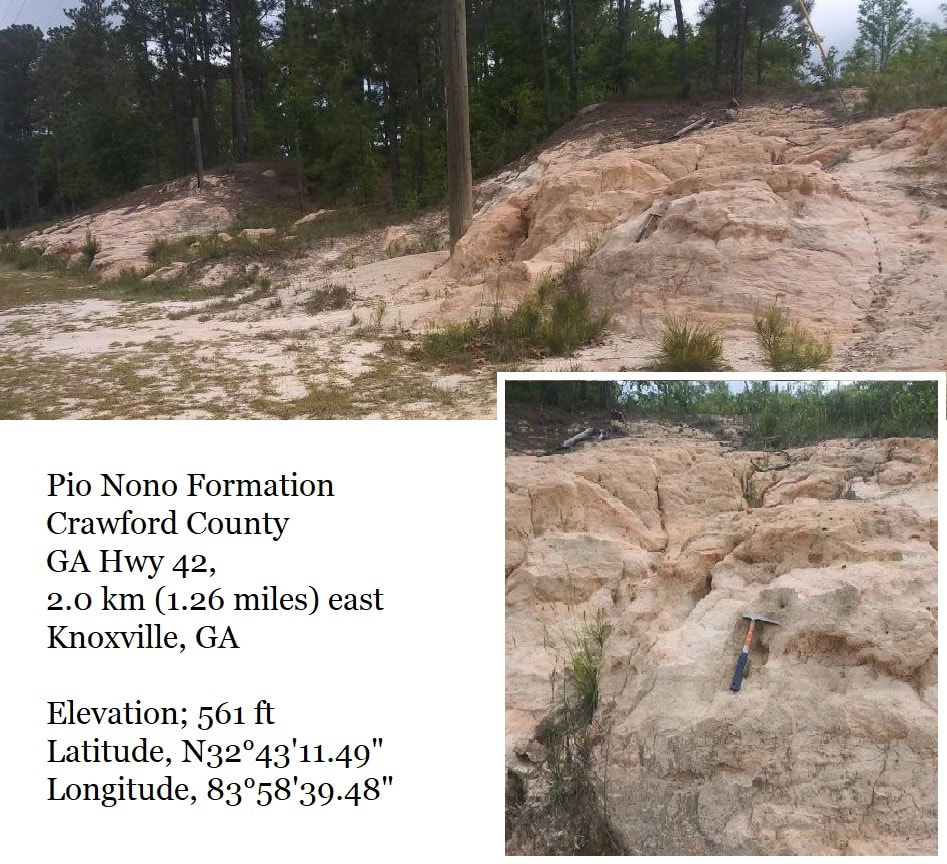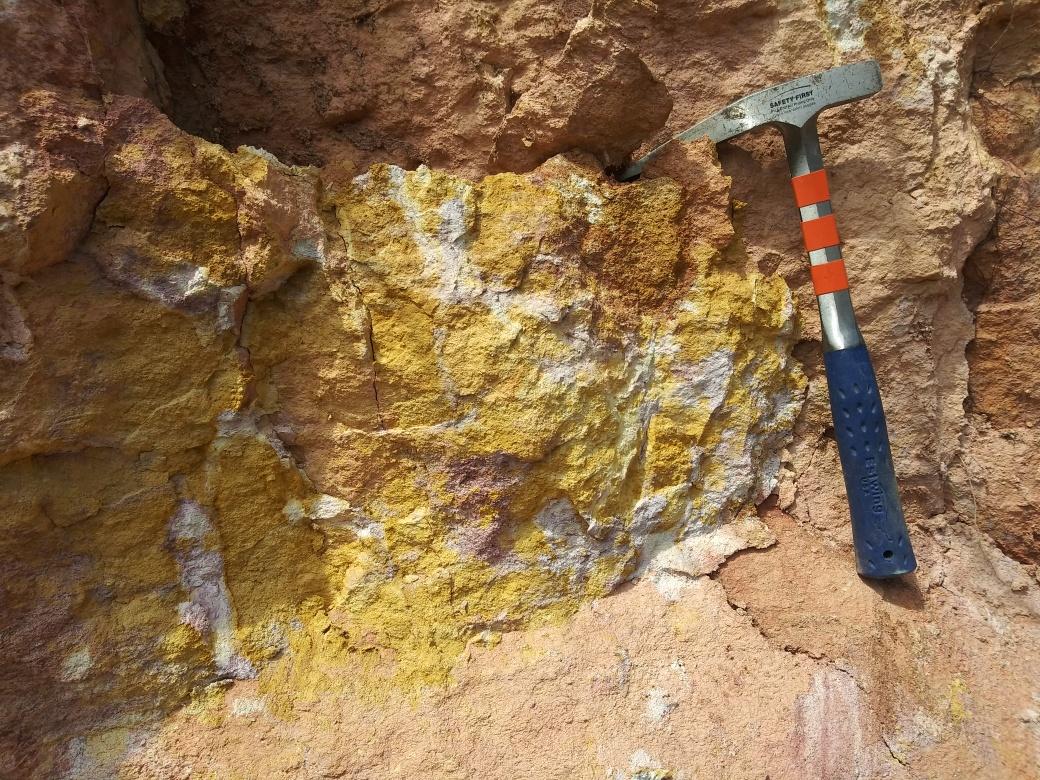7K: The Pio Nono Formation
By Thomas Thurman
The type locality for the Pio Nono Formation is located on the west side of the parking lot of Brad Henderson Memorial Stadium on Anthony Road in Macon. When the author visited the site there was construction going on, the Pio Nono Formation was still accessible but a fence had been erected at the parking lot entrance so it may become gated.
The Pio Nono Formation correlates to the Eutaw Formation and is about 84 million years old. It was identified, described, and named by Paul Huddlestun and John Hetrick in 1991. It has preserved no fossils but is important in understanding Georgia’s natural history.
It is a colorful, kaolin bearing, variably sandy to pebbly and even gravel bearing clay bed. It rests directly atop Piedmont basement rocks and underlies the Gaillard Formation. The name “Pio Nono” is taken from Pio Nono Ave in Macon, GA where there are several small outcrops. Pio Nono Ave was named, in turn, for Pope Pious the 9th. It’s unusual for a Southeastern town to name a road after a pope and the explanation rest in the fact that there was once a convent in the area of Macon’s Pio Nono Ave.
It is described as “highly pigmented, thin to thick bedded, variably horizontal bedded to undulatory-bedded to cross-bedded, moderately to poorly sorted, variably feldspathis and micaceous, sporadically pebbly or gavelly (especially near the Fall-Line where it resembles Quaternary river terrace deposits) kaolinitic sand, sandy kaolin, sandstone, sandy kaolinitic claystone, and kaolinitic sandstone. Quartz sand is the dominant component of the Pio Nono Formation but kaolin is also significant at some sites.”
The Pio Nono is the primary formation outcropping at the Fall Line from the vicinity of Jones County in the east, to around Junction City in the west.
An excellent exposure can be observed 2.35 miles north of Robert, Georgia in Crawford County at the intersection of Georgia Highway 341 and US 80. At the northwest corner of the intersection the Pio Nono Formation stands 20 feet high. On the Southeast corner you can see the deeply weathered saprolite of the underlying piedmont basement rocks.
The Pio Nono is part of the Oconee Group of sediments.
The Oconee Group is defined as pre-Upper Eocene, river deposited (fluvial), kaolin and kaolin-rich sands in the Fort Valley plateau and Fall Lines Hills district of Georgia’s Coastal Plain. The Oconee Group also applies to the fall Line Hills of Alabama, South Carolina, & North Carolina.
In Georgia the Oconee Group includes.
Huber Formation
Gaillard Formation
Pio Nono Formation
The Oconee Group is defined as pre-Upper Eocene, river deposited (fluvial), kaolin and kaolin-rich sands in the Fort Valley plateau and Fall Lines Hills district of Georgia’s Coastal Plain. The Oconee Group also applies to the fall Line Hills of Alabama, South Carolina, & North Carolina.
In Georgia the Oconee Group includes.
Huber Formation
Gaillard Formation
Pio Nono Formation
In the Macon area the Pio Nono Formation is especially kaolinitic and fine grained but in the vicinity of the Flint River it becomes sandier. West of the Flint River from Butler in Taylor County to Junction City in Talbot County the formation is extensively mined for sand.
Reference;
- Huddlestun, Paul F.; Hetrick, John H.; The Stratigraphy of the Fort Valley Plateau and the Central Kaolin District; 26th Annual Field Trip Georgia Geological Society, Georgia Geological Society Guidebooks Volume 11, Number 1, October 1991
You can download and read the original paper below.
| ft._valley_plat_strat_ggs1991.pdf | |
| File Size: | 28778 kb |
| File Type: | |






